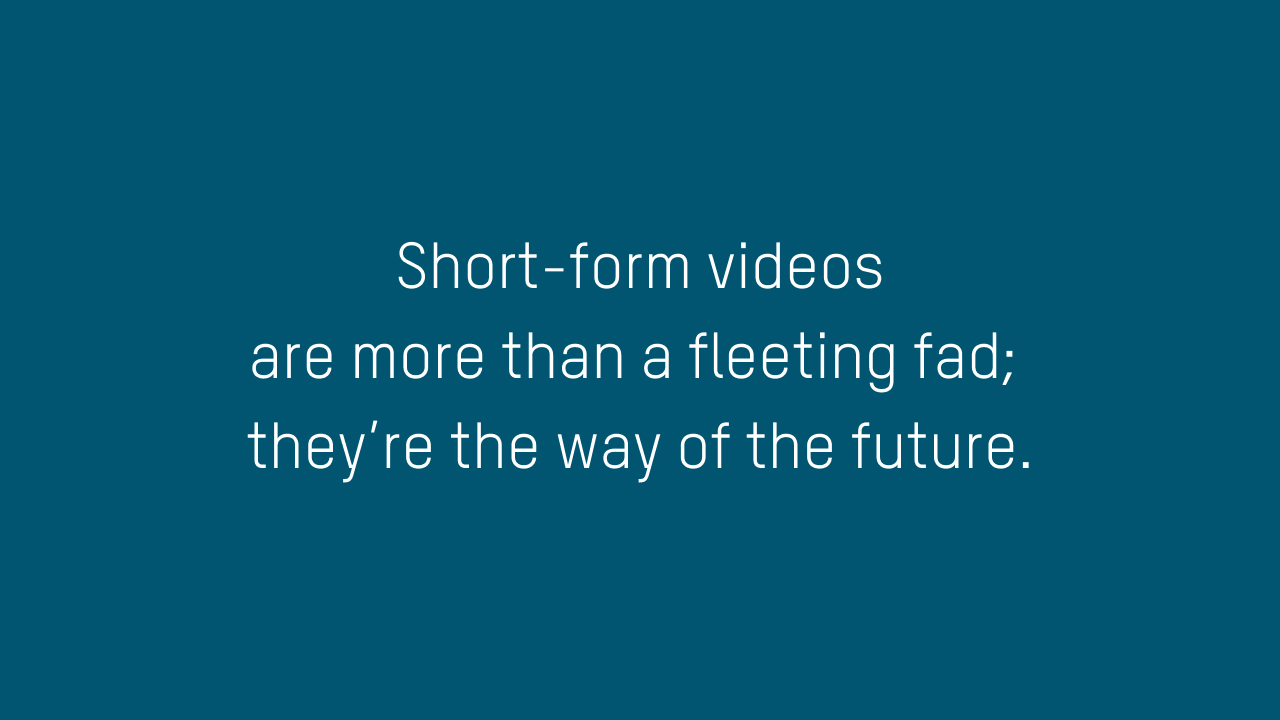The TikTok craze reached a fever pitch during the pandemic. Three years later (and to the surprise of many), it still has a firm grip on consumers.
The video-sharing app is the catalyst behind the mainstreaming of short-form videos. Now hailed as the fourth most used app worldwide—just behind Facebook, YouTube, and Instagram, TikTok boasts 1.5 billion monthly active users (from just 270 million in 2018) (DemandSage).

With its rapid growth in users, TikTok’s revenue soared to a whopping $11.04 billion in 2022, making it the fastest growing social media platform in history (Forbes). This unexpected rise to success has many believing that short-form videos aren’t just a fleeting fad, but the way of the future.
Clash of the ‘Shorts’
Because of customers’ changing consumption habits, major social platforms like Instagram, YouTube and Pinterest have their sights set on replicating TikTok’s success.
These social platforms have already started showcasing bite-sized content on their respective platforms. Instagram now has Instagram Reels, the equivalent of the video-sharing app on the once image-based channel. Launched in 2019, Instagram Reels bears a striking resemblance to TikTok.
YouTube quickly followed suit. It rolled out YouTube Shorts in 2021, showcasing bite-sized clips that are mobile-first to make viewing more intuitive.

Pinterest, a photo-dominated application, also introduced its own video-first feature in 2021, Idea Pins. An upgrade of its now-defunct feature Story Pins, this latest integration offers multiple pages of inspirations to users in striking video format. Pinterest is also continuing to make algorithm changes that prioritize video content within its platform.
With the top social players all in the short-form video game, more and more brands are expected to pivot their marketing strategies to incorporate this emerging content format. Just how effective is bite-sized content for expanding brands’ online mileage?
Bite-Sized, Hard-Hitting
Consumers have an attention span of 8 seconds (shorter than goldfish!). Beyond that, it’s hard to keep them engaged. This is perhaps the biggest hurdle for today’s brands to overcome. Fortunately, there’s a winning solution. Short-form videos are arguably the best way to capture the attention of consumers who always seem to be shuffling through their screens. They’re short and straightforward (plus, they’re entertaining).

This is why 66% said they find short-form videos the most engaging content type on social media (SproutSocial). With short-form videos, consumers can get the gist a few seconds in—then simply dash off. And since these videos have less formality, they come off as more authentic to viewers.
As short-form videos continue to gain traction, they’re predicted to become the most dominant and lucrative form of content in the coming months. Around 85% of marketers attest to the power of this snackable content in getting leads and boosting online engagement (HubSpot).
Most brands have already hopped on the bandwagon. In 2022, 64% of brands started to incorporate short-form videos into their marketing strategies (HubSpot). That number is expected to increase this year as more and more brands recognize the value of bite-sized content. But as more players enter the short-form video scene, cutting through the clutter will become harder. More innovative ways of creating video content will be necessary.

For one, branded challenges (or branded hashtag challenges) will continue to proliferate in the coming months. They’re considered an effective marketing tactic, with 42% of marketers believing that they performed better than expected through these challenge-driven campaigns (HubSpot).
Furthermore, many companies will veer away from image-based content and explore more video-based treatments. Common static posts, such as influencer ads, explainers, how-to infographics, and user-generated content (UGC) are likely to be turned into short-form videos to spark more interactions from users.
Aside from that, 33% of businesses plan to create more videos of a comical nature, as humorous content generates the largest return on investment, particularly when targeted at Millennials and Gen Zers.

Meanwhile, Gen X and Baby Boomers are more drawn to interactive and educational content, such as podcasts, interviews and live videos. Because of this, 43% of brands have expressed their desire to leverage live videos apart from short-form videos. Meanwhile, 66% plan to invest more in this type of format (HubSpot).
As always, in the world of digital marketing the only constant is change. People’s content consumption habits are evolving, perhaps faster than ever. This time, we likely have TikTok to thank.



